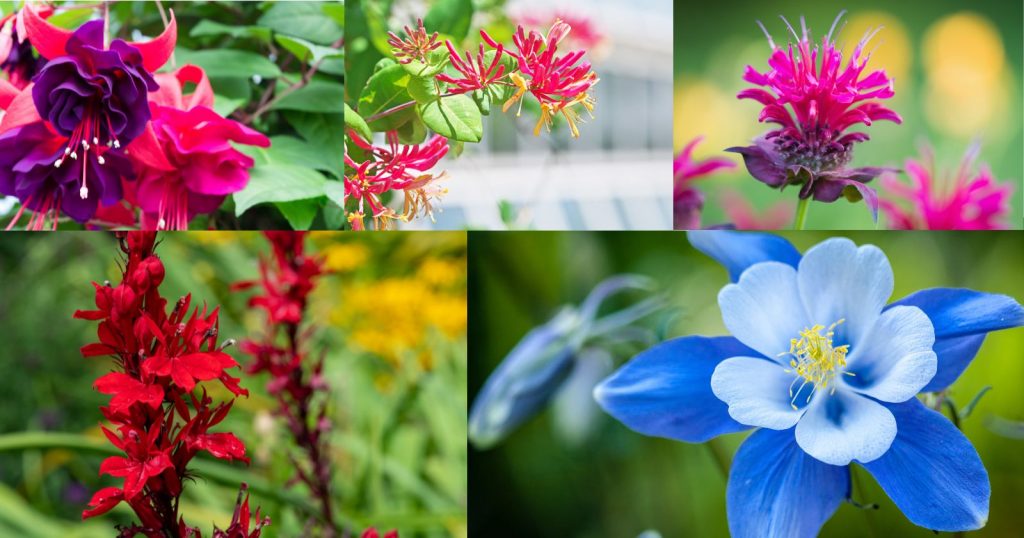Attracting hummingbirds to your garden is a delightful way to bring a touch of nature’s wonder to your outdoor space. These tiny, vibrant birds are not only beautiful to watch but also play a crucial role in pollination.
If you’re keen to turn your garden into a hummingbird haven, you’re in the right place. Let’s explore 7 essential tips that will have these charming birds flocking to your garden in no time.
In this blog post, we will explore the most effective strategies for creating an irresistible hummingbird habitat. From choosing the right plants to providing essential resources, we’ll cover everything you need to know to make your garden a hummingbird hotspot.
How Can I Create a Hummingbird-Friendly Garden?
Creating a hummingbird-friendly garden involves providing food, water, and shelter. Plant nectar-rich flowers, install nectar feeders, offer water sources, and create safe perching spots to attract and sustain hummingbirds in your garden.

1. Plant Nectar-Rich Flowers
The foundation of any hummingbird-friendly garden is a diverse selection of nectar-rich flowers. Hummingbirds are particularly attracted to tubular flowers in shades of red, orange, and pink. Here are some top choices to consider:
- Trumpet honeysuckle
- Bee balm
- Cardinal flower
- Fuchsia
- Columbine
- Salvia
- Penstemon
When planning your garden, aim for a continuous bloom from spring through autumn. This ensures a steady food supply for your feathered visitors. Don’t forget to include native plants, as these are often best adapted to your local climate and the preferences of native hummingbird species.
2. Provide Water Sources
While nectar is their primary food source, hummingbirds also need water for drinking and bathing. Here’s how you can meet their hydration needs:
- Install a shallow birdbath or fountain with moving water
- Add a mister or dripper that hummingbirds can fly through
- Ensure the water source is clean and fresh
Remember, hummingbirds prefer moving water, so a fountain or dripper is often more attractive than a still birdbath.
3. Offer Nectar Feeders
Supplementing natural nectar sources with feeders can significantly increase your chances of attracting hummingbirds. Here are some tips for using nectar feeders effectively:
- Choose feeders with red accents, as this colour attracts hummingbirds
- Use a mixture of 4 parts water to 1 part white sugar (avoid honey or artificial sweeteners)
- Clean and refill feeders regularly, about twice a week or more in hot weather
- Place feeders in partially shaded areas to prevent the nectar from fermenting
It’s crucial to maintain clean feeders to prevent the growth of harmful bacteria or mould that could be detrimental to hummingbirds’ health.
4. Create Perches and Shelter
Hummingbirds need places to rest and feel safe. Here’s how you can provide suitable perches and shelter:
- Leave small, bare branches on trees and shrubs for perching
- Plant trees and shrubs to provide cover and potential nesting sites
- Add vertical elements like trellises with flowering vines
- Consider installing a ‘hummingbird swing’ near feeders
These resting spots allow hummingbirds to survey their surroundings and feel secure in your garden.
5. Avoid Pesticides
Pesticides can be harmful to hummingbirds and reduce their food sources. Here’s why and how to maintain a pesticide-free garden:
- Eliminate chemical pesticide use in your garden
- Allow some insects to thrive, as they provide essential protein for hummingbirds
- Use natural pest control methods like companion planting and hand-picking pests
By creating a balanced ecosystem in your garden, you’ll not only attract hummingbirds but also support other beneficial wildlife.
6. Maintain Spider Webs
It might seem counterintuitive, but spider webs play a crucial role in attracting hummingbirds:
- Leave spider webs intact where possible
- Hummingbirds use spider silk as nesting material
- Webs also trap small insects that hummingbirds eat
By allowing spiders to thrive in certain areas of your garden, you’re indirectly supporting hummingbird populations.
7. Space Out Food Sources
To encourage more hummingbirds to visit and prevent territorial behaviour, it’s important to spread out your offerings:
- Place multiple feeders and plantings around your yard
- This prevents one dominant hummingbird from monopolising a single food source
- Consider creating ‘feeding stations’ in different areas of your garden
By providing multiple food sources, you increase the chances of attracting and sustaining a larger hummingbird population.
Related Post: 33 Top Plants That Attract Hummingbirds.
Final Thoughts
Creating a hummingbird-friendly garden is a rewarding endeavour that not only brings joy to you as a gardener but also supports these incredible birds. By implementing these seven essential tips, you’re well on your way to transforming your outdoor space into a hummingbird paradise.
Remember, patience is key. It may take some time for hummingbirds to discover your garden oasis, but once they do, you’ll be treated to a spectacular display of nature’s wonders right in your backyard.
Before we conclude, here’s a question for you: What’s your favourite memory or experience with hummingbirds? Share your stories in the comments below – we’d love to hear them! And if you found this guide helpful, please share it with fellow garden enthusiasts who might also want to attract these marvellous birds.
Thank you for reading, and happy hummingbird gardening!
Citation:
- About Hummingbird (Link).
